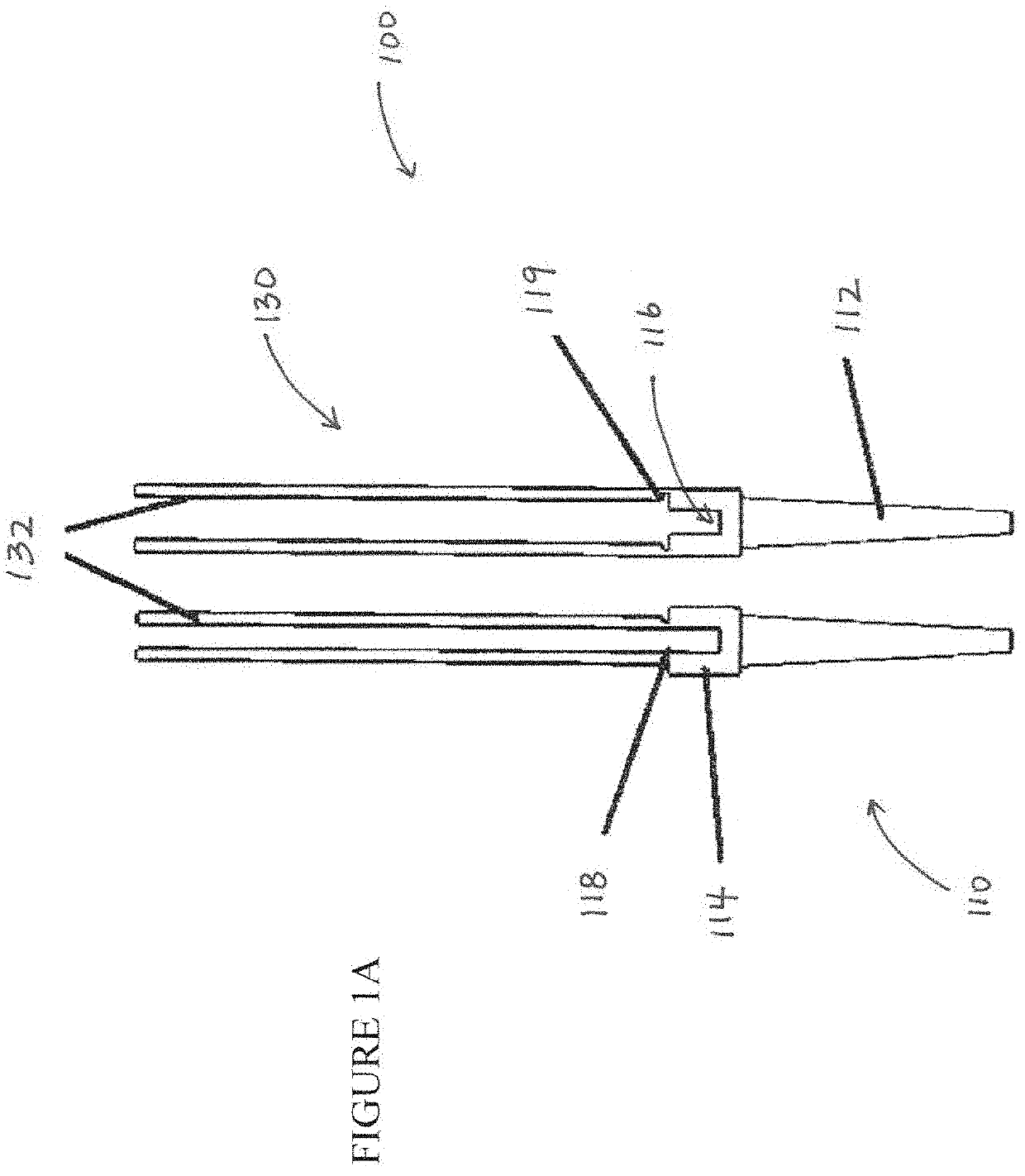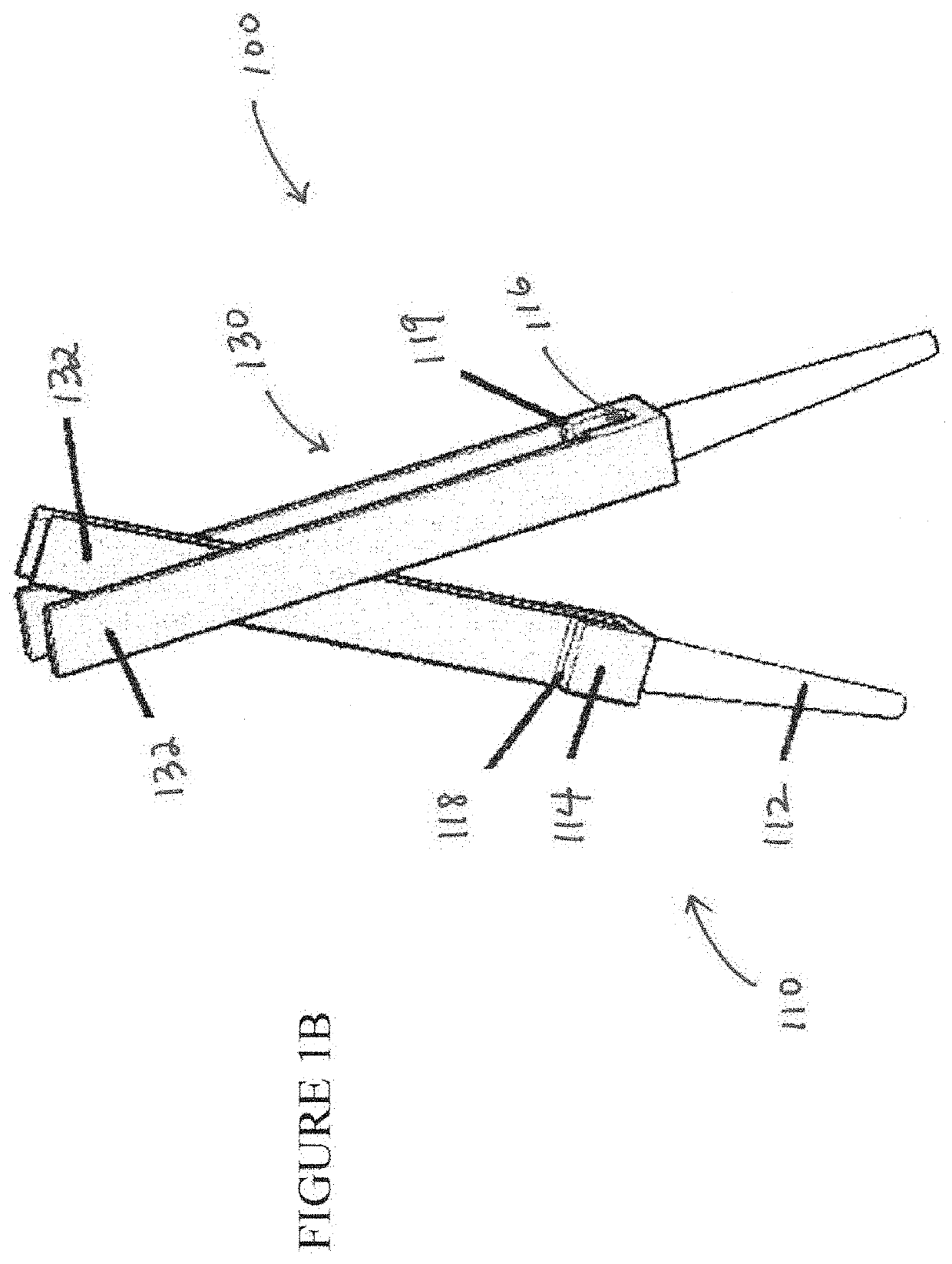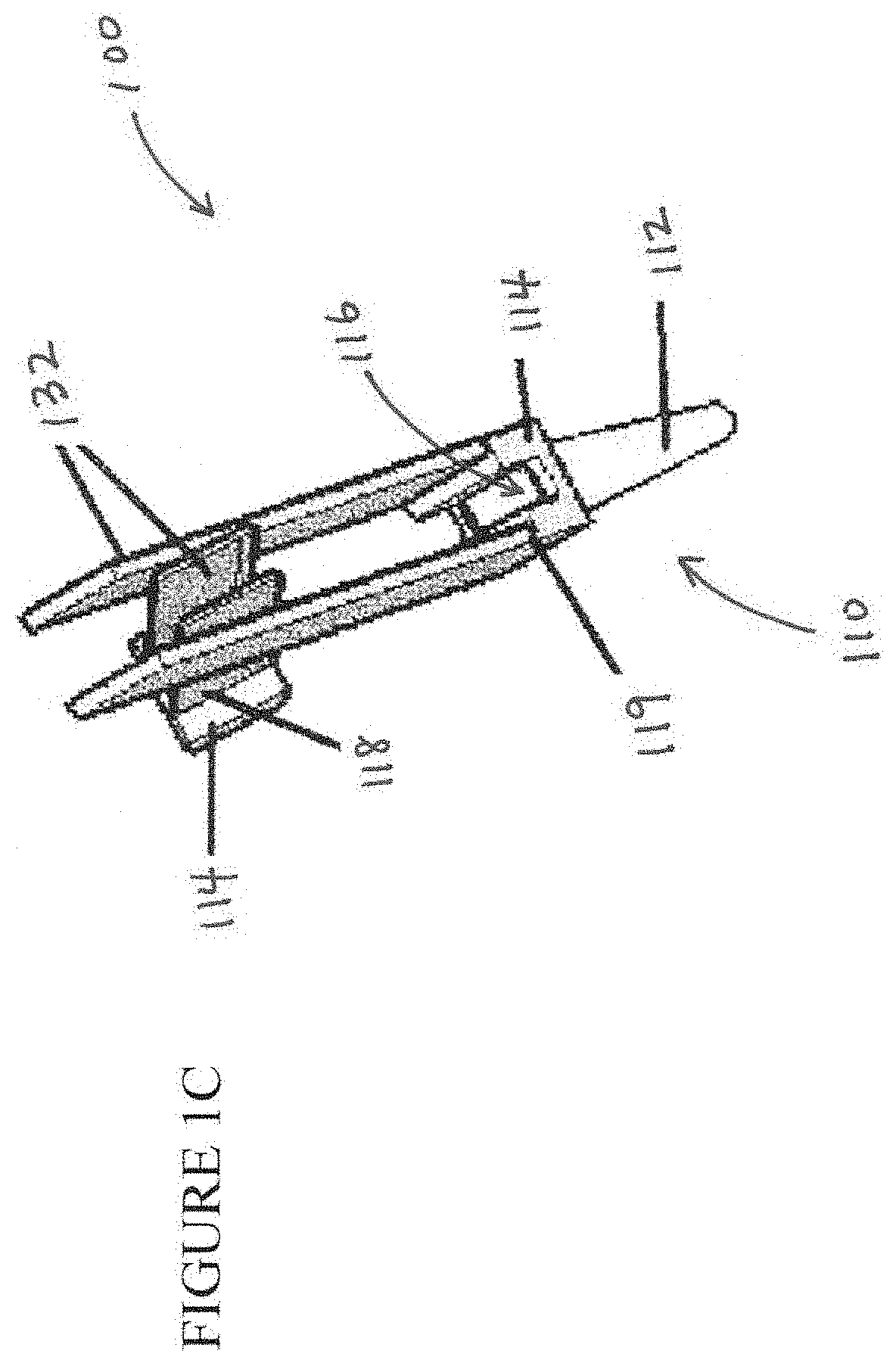Systems and methods for pedicle screw stabilization of spinal vertebrae
a technology of spinal vertebrae and pedicle screws, applied in the field of medical devices, systems and methods for bone fixation, can solve the problems of loss of natural lordotic curvature, fracture of facet or pars interarticularis (pars), and injuring all, so as to increase the chance of a successful stabilization, reduce pressure on nerve roots, and increase the volume and diversity of spaces
- Summary
- Abstract
- Description
- Claims
- Application Information
AI Technical Summary
Benefits of technology
Problems solved by technology
Method used
Image
Examples
Embodiment Construction
Overview
[0055]The present disclosure involves improved systems, apparatuses and methods for guiding one or more screws, rods, and locking assemblies down to the vertebrae and for securing a rod or other spinal implant to stabilize the vertebrae. An embodiment of a system for stabilizing spinal vertebrae 100 is illustrated in FIG. 1A. In some embodiments, the system for stabilizing spinal vertebrae 100 can include pedicle screws. As illustrated in FIG. 1A, in some embodiments, the screw 110 can include a bone engaging shaft 112 and a screw head 114. In some examples, the bone engaging shaft 112 is threaded. The bone engaging shaft 112 may be relatively moveable to different angles relative to the screw head 114. In some embodiments, the screw head 114 has generally a U-shape, as shown in FIG. 1A, defining upwardly extending arms that form a channel for receiving a rod 120 (illustrated below in FIGS. 3A-3C). The rod 120 may either sit on the head of the bone engaging shaft 112, or may...
PUM
 Login to View More
Login to View More Abstract
Description
Claims
Application Information
 Login to View More
Login to View More - R&D
- Intellectual Property
- Life Sciences
- Materials
- Tech Scout
- Unparalleled Data Quality
- Higher Quality Content
- 60% Fewer Hallucinations
Browse by: Latest US Patents, China's latest patents, Technical Efficacy Thesaurus, Application Domain, Technology Topic, Popular Technical Reports.
© 2025 PatSnap. All rights reserved.Legal|Privacy policy|Modern Slavery Act Transparency Statement|Sitemap|About US| Contact US: help@patsnap.com



